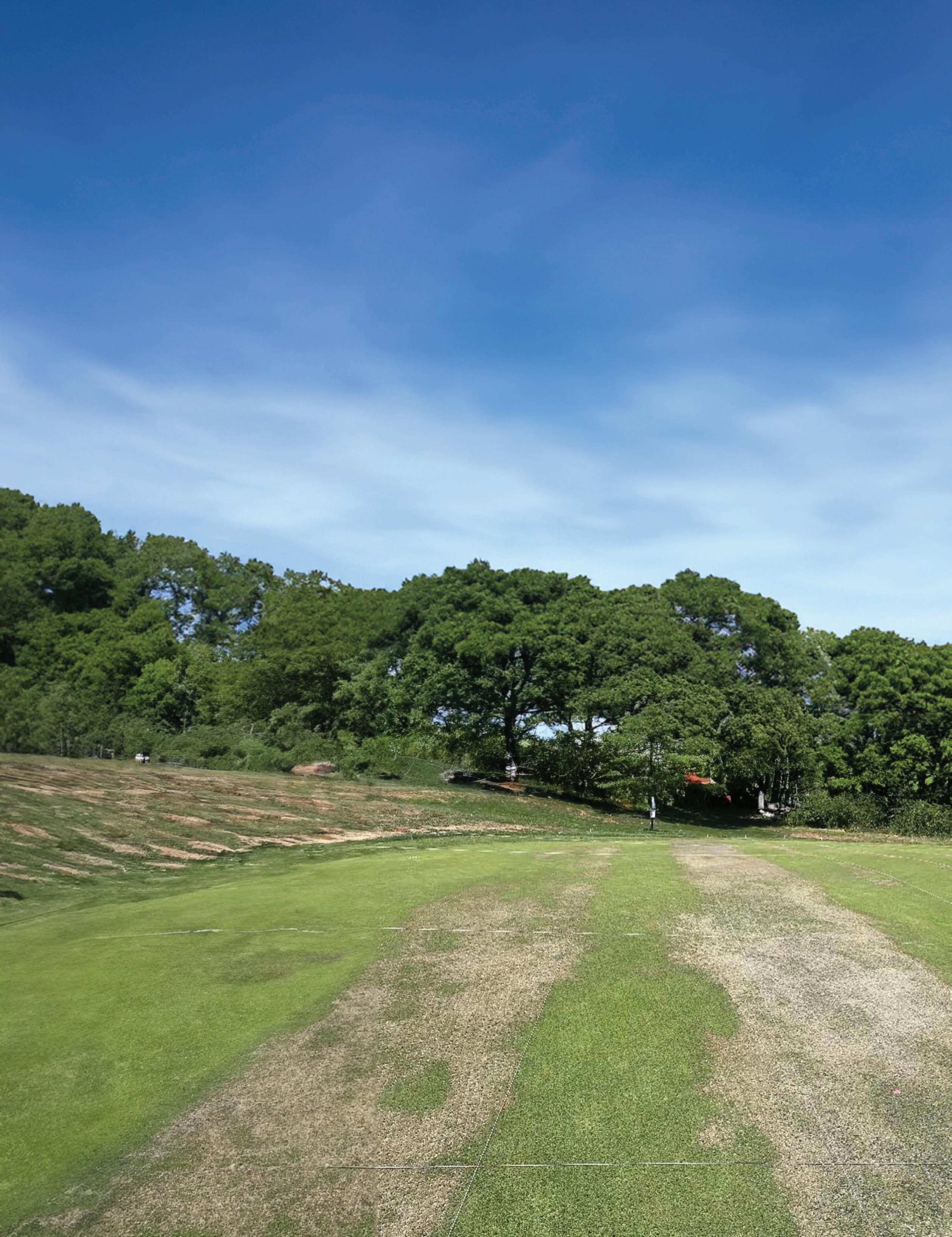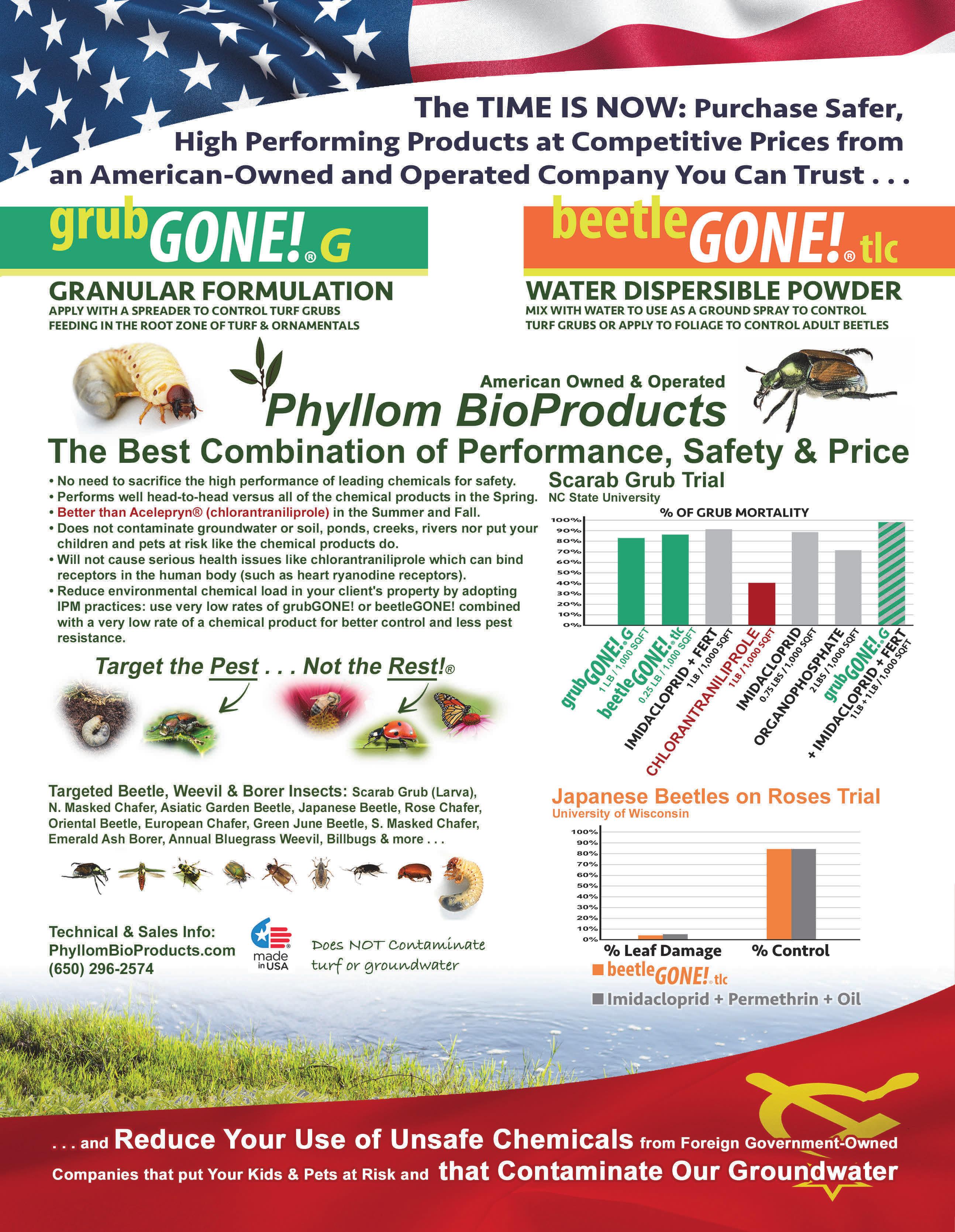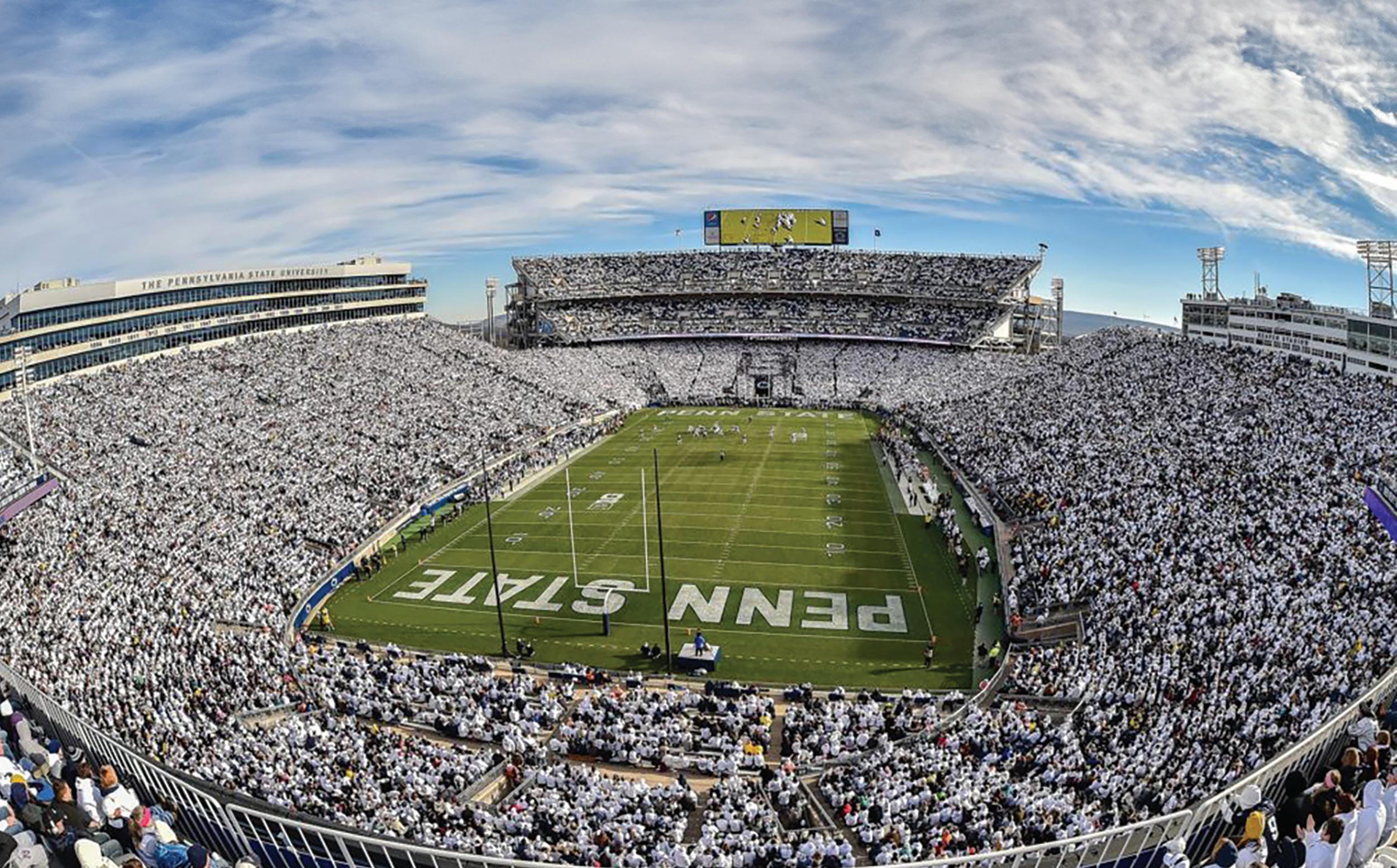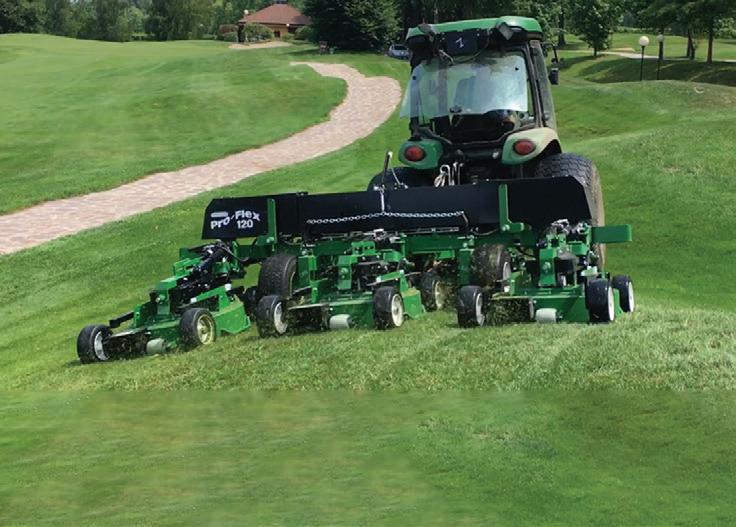Spring has sprung…

…or at least it is trying to! We hope that all the preparation we did this past offseason will pay off into making us better turf professionals this upcoming season.
I always look at the spring as a new beginning. A new year, chock full of promise, intrigue, and opportunity. What does the 2024 season have in store for us? Probably some things we’ll manage to control, or at least mitigate, and other things that will prove way more challenging. Whatever this season brings will probably be met head on, that’s for sure. I think that’s one of the best parts of this industry; a new year brings many new challenges and even though it brings stress, a lot of times it brings new challenges for us to overcome. It makes the season that much more enjoyable and gratifying. It keeps our jobs fresh, and the unknown keeps us on our toes and sharp.
I hope that many of you were able to attend one or more of the conferences that were brought to you by the PTC, and that you were able to gain some new ideas, knowledge or friendships that you can now use into the new season. I want to give thanks to the board of the PTC for all their work during the conference season and especially the behind the scenes warriors Kristen Althouse and Tom Bettle for giving us some great events this year. To see these great speakers and create new relationships is what the conference season is all about. It lets us know who else enjoys this industry with us and gives us some great resources to embark into another great season in 2024.
I hope everyone has a successful and prosperous 2024!
Sincerely
Rick Catalogna President of the PTC
The Pennsylvania Turfgrass Council (PTC) serves its members in the industry through education, promotion and representation. The statements and opinions expressed herein are those of the individual authors and do not necessarily represent the views of the association, its staff, or its board of directors, Pennsylvania Turfgrass, or its editors. Likewise, the appearance of advertisers, or PTC members, does not constitute an endorsement of the products or services featured in this, past or subsequent issues of this publication. Copyright © 2024 by the Pennsylvania Turfgrass Council. Pennsylvania Turfgrass is published quarterly. Subscriptions are complimentary to PTC members. Presorted standard postage is paid at Jefferson City, MO. Printed in the U.S.A. Reprints and Submissions: Pennsylvania Turfgrass allows reprinting of material published here. Permission requests should be directed to the PTC. We are not responsible for unsolicited freelance manuscripts and photographs. Contact the managing editor for contribution information. Advertising: For display and classified advertising rates and insertions, please contact Leading Edge Communications, LLC, 206 Bridge Street, Suite 200, Franklin, TN 37064, (615) 790-3718, Fax (615) 794-4524.
Jeffrey A. Borger
Senior Instructor Emeritus in Turfgrass Weed Management
814-865-3005 • jborger@psu.edu
Michael A. Fidanza, Ph.D. Professor of Plant & Soil Science
610-396-6330 • maf100@psu.edu
David R. Huff, Ph.D. Professor of Turfgrass Genetics 814-863-9805 • drh15@psu.edu
Brad Jakubowski
Instructor of Plant Science
814-865-7118 • brj8@psu.edu
John E. Kaminski, Ph.D. Professor of Turfgrass Science 814-865-3007 • jek156@psu.edu
Peter J. Landschoot, Ph.D. Professor of Turfgrass Science 814-863-1017 • pjl1@psu.edu
Ben McGraw, Ph.D.
Associate Professor of Turfgrass Entomology 814-865-1138 • bam53@psu.edu
Andrew S. McNitt, Ph.D. Professor Emeritus of Soil Science 814-863-1368 • asm4@psu.edu
Max Schlossberg, Ph.D. Associate Professor of Turfgrass Nutrition / Soil Fertility 814-863-1015 • mjs38@psu.edu
Al J. Turgeon, Ph.D. Professor Emeritus of Turfgrass Management aturgeon@psu.edu
6 Pennsylvania Turfgrass • Spring 2024 President’s Update
State Turf Team
Penn

The surface is very “puttable.” The dots are sand that is level with the turf. DryJect®

Aerate and Play Right Away!
down time, increased revenue.
Decreased
is a high-pressure,
it
difference
DRYJECT.com Dryject Eastern PA Mike Zellner (484)-357-9197 mike@dryject.us Dryject Western PA Ben Little (412)-610-9001 ben.j.little@comcast.net Call Today! NO BUMPS!
hour following a DryJect® treatment. Aerate, amend and play right away
water based injection system that blasts holes through the root zone and fractures the soil profile. Plus,
automatically fills holes as it aerates. DryJect® makes a big
in playability … right away!
One
Penn State Turf Professionals Move into New Roles
AsKAFMO matures as an organization, the founding leadership is always looking to the future. Succession and nurturing the careers of young people in the field has become a priority. Therefore, it is always good news to see members moving up the ranks in the turf industry. As we enter 2024, we want to recognize a few notable promotions in the Penn State sports turf family.
Notable Promotions
Herb Combs, who had served as Assistant Athletic Director for Facilities and Grounds since 2016, has been promoted to Associate Athletic Director for Facilities Management and Operations. He will oversee the day-to-day management of Penn State Intercollegiate athletics facilities and operations. George Peters has moved into the Assistant Athletic Director position after five years at University Park and previous work experience that includes coordinating outdoor athletics facilities at Oklahoma State and field maintenance at PNC Park for the Pittsburgh Pirates. And after working on the groundskeeping crew at Penn State since 2009, Chris Gawryla has moved into the role vacated by George Peters. He is now the new Supervisor of Grounds, which includes responsibility for the care of all of the sports fields and surrounding areas. We caught up with Chris Gawryla just before the holidays to find out more about him and his new role.
Guidance
Chris’s story is a perfect example of how schools can help a young person find the career he didn’t know he was looking for. When asked “What attracted you to a career in turf management,” many turf professionals will talk about their love for a particular


sport. Chris Gawryla recalls that as he was looking into college, he spoke with his guidance counselor and mentioned that he liked working with his hands and being outside. It was his guidance counselor who steered him toward the turfgrass industry. “I cut grass as a kid but never really considered something similar as a career,” he remembers. “My parents and I looked at Penn State’s Associate’s degree program and the Bachelor’s degree program. As I entered college, I was still unsure what I wanted to pursue so I entered Penn State undecided, eventually landing in their Bachelor’s program.” Chris Gawryla graduated with a degree in Turf Science from Penn State University in 2007 and has been connected with the university and with the industry ever since.
Gawryla’s years of experience on the groundskeeping crew gave him all the hands-on experience he needs to prepare him for a supervisory role. He is also a problem-solver and an inventor who developed, patented, and until 2015 manufactured a device for putting lines on synthetic turf. He knows what it takes to maintain a top-level athletic facility, from the operation of various mowing and earth-moving equipment to the application of pesticides and herbicides for turf maintenance. He has also had long experience in leading a crew to accomplish a task. The biggest challenges he anticipates will probably come from the scheduling of events.
Network is Important
“I was fortunate enough to have been on the crew as a full-time member for a little over 13 years before accepting my current position. In that time, I’ve experienced a lot of what goes on, at least from the physical work side. Having great coworkers, paying attention, and asking questions over the years has really built a sound base of knowledge of the operation,” he says.


Between the Lines 8 Pennsylvania Turfgrass • Spring 2024
CONTACT Dan Douglas, President Phone: 610-375-8469 x 212 KAFMO@aol.com CONTACT Linda Kulp, Executive Secretary Phone: 717-497-4154 kulp1451@gmail.com Keystone Athletic Field Managers Organization 1451 Peter’s Mountain Road Dauphin, PA 17018-9504 www.KAFMO.org • Email: KAFMO@aol.com
GEORGE PETERS
HERB COMBS
CHRIS GAWRYLA

As o u r th o u g h ts tu r n to a e r if ic a tio n a n d th e w in te r m o n th s a h e a d , it is o f p a r a m o u n t im p o r ta n c e to ta ke y o u r tu r f in to th e w in te r s e a s o n a s h e a lth y a s p o s s ib le . L e t UHP H h e lp y o u d o th a t. S a n c tu a r y w ill g iv e y o u r tu r f a n o r g a n ic n u tr itio n a l b o o s t a n d Tu r f S c r e e n is a g r e a t w a y to p r e v e n t s n o w m o ld a n d w in te r d e s ic c a tio n .
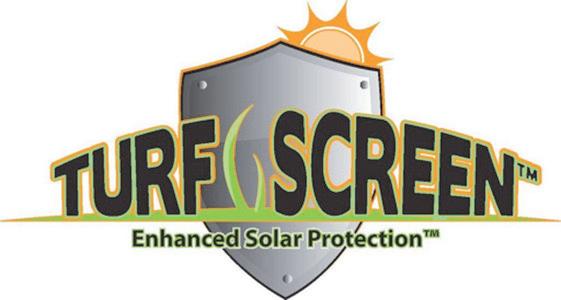


www. U H P H LLC. c o m fwheery@gmail.com * (847) 863-7031

BEAVER STADIUM
“As far as looking to people for help, the industry is always very helpful, but the most helpful are the people who work on the crew. They all have their own strengths and knowledge that supports everything that we do. Without their talents and willingness to contribute, we wouldn’t be able to produce near the product that we do.”
Beyond the direct support of his crew, Gawryla knows he can rely on the extensive network of people who have worked for the Beaver Stadium

Between the Lines • continued 10 Pennsylvania Turfgrass • Spring 2024
Grounds Crew. “Everyone, from all the former head groundskeepers to former student workers who have moved on to their own places in the industry” is a part of that network. When asked what he was most looking forward to, Chris Gawryla’s response showed just how strong his connection to his crew is. “I look forward to having the opportunity to continue to work with and guide a great group of people who have become a second family to me. Our full-time staff are very cohesive and that’s something that we strive to maintain.”
Outreach and Advice
Given how important Chris Gawryla’s school guidance counselor was to his career choice, we asked him about possible efforts to reach out to future candidates while they are still in school, like the FFA connection KAFMO has been cultivating. It turns out that this is no easy task. “This past spring, I tried to connect with ag teachers from local school districts about passing along job opportunities to graduating students who may be interested in the industry, but I didn’t have much success,” he recalls. So even though much has been done to improve outreach and get turf management on the radar as a career, it seems there is still work to be done in that area.
As someone who knows the field, Gawryla has good advice to offer to people interested in pursuing turf management as a career. “The turf industry can be a very rewarding place,” says Gawryla. “The best advice that I can give is to get out and experience what the industry has to offer. For anyone who is pursuing a degree I would say do as many internships as possible while in school. At Penn State there are many ways to gain industry experience: working with us on the Beaver Stadium Grounds Crew, working at the Valentine Turfgrass Research Center, the Penn State golf courses, and the State College Spikes. Just reach out and talk to the people who are in a position that you think you might want to be in.”
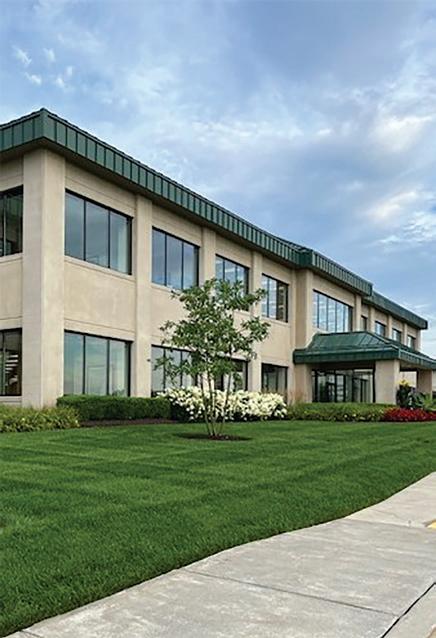

DIGITAL MARKETPLACE

11 Spring 2024 • Pennsylvania Turfgrass Our warehouses are fully stocked and ready to meet your seeding needs with our extensive selection of turfgrasses and seeding supplies, ready to be prepared and delivered to suit your needs. LIFE IS COMPLICATED — SEED DOESN’T HAVE TO BE — WE MAKE SEED EASY. 797 Commerce Street Sinking Spring, PA 19608 Phone: 800-345-3344 SeedInfo@FMBrown.com Mike Kachurak ISA Certified Arborist PD-2739A 334 South Henderson Road King of Prussia, PA 19406 Office 610.265.6004 Cell 570.262.3612 mikek@shreinertreecare.com www.shreinertreecare.com SPECIALIZING IN BENTGRASS SOD FOR GREENS, TEES, & FAIRWAYS FINE AND TALL FESCUE REGULAR AND SHORTCUT BLUEGRASS KEVIN DRISCOLL CELL: 609-760-4099 OFFICE: 856-769-9555 KDRISCOLL@EASTCOASTSOD.COM
the QR Code to learn more about this company.
Scan
Research
Considerations with Biostimulants for Turfgrass Management
By Mike Fidanza, Ph.D. — Professor of Plant and Soil Science, Penn State Berks Campus; Reading, PA (maf100@psu.edu)
The term “biostimulant” has been misunderstood, misused, or misplaced as a potential “miracle cure” in the turfgrass industry, and biostimulant products were often dismissed as “snake oil” or “foo-foo juice” (e.g., sarcastic reference to the mythical foo-foo tree). Some biostimulant products make performance claims substantiated with scientific research, while other products lack direct evidence of their actual benefit.
Dr. Richard Schmidt (Emeritus Professor at Virginia Tech; Blacksburg, VA; and Penn State alum) is considered the pioneer of biostimulant research in turfgrass science. Dr. Schmidt defined biostimulants as follows: “Biostimulants are organic materials that when applied in small or minute quantities enhance plant growth and development.” The use of the word “minute” in this definition is intended to differentiate the fact that these substances, compared to traditional nutrients and/or soil amendments, elicited a measurable and beneficial response at much lower application rates. In his early work, Dr. Schmidt considered the plant biostimulant effect was attributed to a hormonal response and the plant protection effect against abiotic stress as attributed to antioxidant production, and both of those effects made possible from low concentrations of exogenous applications. Dr. Schmidt also used the term “metabolic enhancers,” but the important distinction was that something positive was happening to the plant beyond what mineral nutrition supplied.
More recently, plant biostimulant is defined as “any substance or microorganism applied to plants with the aim to enhance nutrition efficiency, abiotic stress tolerance, and/or crop quality traits, regardless of nutrient content.” The term “plant biostimulant” often is used to describe the various categories of compounds and substances used in these products: plant growth hormones (e.g., abscisic acid, auxins, cytokinins, gibberellic acid, etc.), microorganisms (e.g., Bacillus spp., Trichoderma spp., mycorrhizae, etc.), amino acids, humic and fulvic acids, plant defense-activating substances, plant growth-promoting compounds, vitamins, pigments and oils, soil amendments and soil conditioners, composts and compost teas, and more.
The European Biostimulant Industry Council (EBIC; https:// biostimulants.eu) defines biostimulants as: “Agricultural biostimulants include diverse formulations of compounds, substances,
and other products that are applied to plants or soils to regulate and enhance the crop’s physiological processes, thus making them more efficient; biostimulants act on plant physiology through different pathways than nutrients to improve crop vigor, yields, quality and post-harvest shelf life/conservation.” The EBIC also has a functional definition of plant biostimulants as follows: “A material which contains substance(s) and/or microorganisms whose function, when applied to plants or the rhizosphere, is to stimulate natural processes to benefit nutrient uptake, nutrient efficiency, tolerance to abiotic stress, and/or crop quality, independently of its nutrient content.” Of note, the EBIC’s functional definition expands beyond the ‘plant’ to also include the ‘soil’ (e.g., rhizosphere).
The Association of American Plant Food Control Officials (AAPFCO; https://aapfco.org) defines biostimulants as: “Any substance or compound other than primary (e.g., N, P, and K), secondary (e.g., Ca, Mg, S), and microplant nutrients (e.g., Fe, Cu, etc.), that can be demonstrated by scientific research to be beneficial to one or more plant species when applied exogenously; …a substance or material, with the exception of nutrients or pesticides, which has the capacity to beneficially modify plant growth.” Of note, the ASPFCO definition of biostimulants refers to the term “beneficial substance.”
Biostimulants are often categorized by “what they are” (e.g., how are these substances or compounds or component materials described chemically or physically?) and “what they do” (e.g., how do these substances or compounds benefit the turfgrass plant or the turfgrass soil/rootzone?). The turfgrass practitioner and stakeholder would benefit from knowing not only what a biostimulant is actually composed of, but how those commercially available biostimulant products benefit turfgrass management programs. Therefore, a proposed classification method or strategy for listing biostimulants in turfgrass is presented in Table 1 Overall, biostimulants are listed as primarily targeting the plant or soil/rhizosphere, then further organized by category to describe their composition, followed-by active or functional ingredients (e.g., compounds, substances, other descriptive terms) listed within each category. Examples of common names for biostimulant products are listed for each category.
I. Phytohormones
Plant hormones or phytohormones are considered chemical messengers in plants. They are referred to as ‘signal molecules’ that occur in very low concentrations, and are vital to plant growth and development, and regulation and function of many physiological processes. The most common phytohormones utilized as plant biostimulants are abscisic acid, auxins, cytokinins, ethylene, and gibberellic acid.
Abscisic acid is associated with water regulation in plants and is associated with the plant’s ability to mitigate abiotic stress from drought, salinity and temperature. Auxin is responsible for phototropism (e.g., shoots growing upward, toward the light) and gravitropism (e.g., roots growing downward into the soil). Indole-3-acetic acid (IAA) is the most common naturally occurring auxin and included as the auxin component of many biostimulant products to promote root viability and drought tolerance. Cytokinins are involved with plant growth and development and stress-response processes, and in particular with cell division and delaying of leaf senescence
Cover Story
14 Pennsylvania Turfgrass • Spring 2024
(e.g., plant senescence is the process of aging in plants; plants have both stress-induced and age-related developmental aging). This delay of leaf senescence or “stay green” effect is a plant stress response in which cytokinins inhibit the action of senescence-inducing enzymes, slowing the degradation of chlorophyll, and maintaining photosynthetic rates and root viability. An example of a commonly used biostimulant product in this category is seaweed extract, also referred to as seaplant or kelp. Gibberellic acid controls important plant growth functions such as cell elongation and stem growth, seed germination, flower development, and flowering time. While abscisic acid, auxin, cytokinin, and gibberellic acid exist in the plant in liquid form, ethylene is a gaseous phytohormone that regulates plant growth (e.g., the development of leaves, flowers, and fruits), senescence, response to environmental stresses (e.g., heat and freezing stresses), and often interacts with other phytohormones.
II. Biopolymers, protein hydrolysates, and other N-containing compounds
Examples of compounds in this category include amino acids, and they are considered the “building blocks” for proteins, enzymes, nucleic acids, antioxidants, and other secondary compounds. The L-form of amino acids are assimilated by plants, and these L-amino acids and short-chain peptides are reported to increase plant N uptake, increase root mass, activate natural defense mechanisms, and enhance photosynthesis.
III. Other botanical or synthetic bioactive compounds
This is a “placeholder” category for plant-directed compounds not yet described or fully understood, or for compounds that do not fit the description of the other categories. An example of an organic compound in his category is acibenzolar-S-methyl, which is a synthetic analog of salicylic acid and is referred to as a “plant defense activator” because it produces an induced systemic resistance response and thus activates a plant’s natural defense system.
IV. Humic substances
Humic substances (e.g., humic and fulvic acids) are natural decomposition constituents of soil organic matter, typically derived from leonardite (a natural form of humates), associated with “brown coal” deposits. Benefits of these compounds increased soil nutrient and water holding capacity (e.g., increased cation exchange capacity), prevention and reduction in leaching of soil nutrients, chelators of organic molecules and minerals facilitating increased plant root absorption, enhanced soil enzyme and metabolic activity.
V. Organics
Traditionally, organic amendments such as peat moss, manures, biosolids, composts, and other materials have been added to sand-based turfgrass rootzones to increase water and plant nutrient retention and availability. Ideally, organic materials and substances applied to turfgrass soils should be sufficiently decayed and biologically stable and decompose very slowly so their benefits or positive impact can be expressed over a long time.
PLANT
Category 1 Examples of active or functional ingredients Examples of biostimulant products 2
I Phytohormones Abscisic acid
Auxins
Cytokinins
Ethylene
Gibberellic acid
Others
II Biopolymers, protein hydrolysates, and other N-containing compounds
Amino acids (e.g., proline, etc.)
Antioxidants
Betaines
Chitin
Enzymes
Fatty acids
Non-protein amino acids
Peptides
Polyamines
Polysaccharides
Vitamins
Others
III Other botanical or synthetic bioactive compounds
Elicitor compounds, Induced systemic resistance compounds, Plant defense activator compounds,
Others
1 Category based on chemical and/or physical composition.
algae, indoleacetic acid, benzyl-adenine, gibberellins, kelp, seaplant, seaweed extracts, and more
amino acids, chitosan, glycine betaine, and more
acibenzolar-S-methyl, jasmonic acid, salicylic acid, and more
2 Broad or general name of a biostimulant product listed; no product trade name provided. Should an additional column list the specific biostimulant function of those biostimulant products, and/ or should the manufacturer include that information on their product label?
SOIL / RHIZOSPHERE
Category 1 Examples of active or functional ingredients Examples of biostimulant products 2
IV Humic substances Fulvic acid
Humic acid leondardite, and more
V Organics Biochar
Bio-extracts
Bio-fertilizers
Composts/compost extracts
Soil amendments/supplements
Others
VI Inorganics /minerals Al, Co, Na, Mo, Se, Si, etc.
Phosphites
Others
VII Biologicals/ microbials Beneficial fungiArbuscular mycorrhizal fungi
Trichoderma spp.
Others
Beneficial bacteriaBacillus spp. and other species
Plant growth promoting rhizobacteria
Others
Other beneficial organisms
biochar, composts, compost teas, kelp, seaplant, seaweed extracts, vermi/worm extracts, and more
phosphite salts, and more
Many
VIII Soil surfactants 3 --?-- --?--
IX Other naturally derived or synthetic bioactive compounds
Elicitor compounds
Induced systemic resistance compounds
Plant defense activator compounds
Others
1 Category based on chemical and/or physical composition.
--?--
2 Broad or general name of a biostimulant product listed; no product trade name provided. Should an additional column list the specific biostimulant function of those biostimulant products, and/ or should the manufacturer include that information on their product label?
3 Proposed location of soil surfactants as a category if some of those soil surfactants are to be considered or included as biostimulants.
15 Spring 2024 • Pennsylvania Turfgrass
Table 1. Proposed classification of biostimulants for turfgrass science and industry.



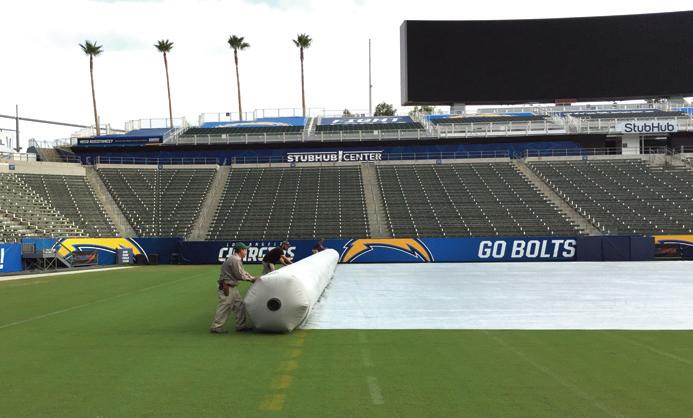


Recently, biochar has gained interest due to a high carbon content, porosity, and stability (e.g., extremely resistance to microbial degradation). Vermicompost extract also is popular for improving the biological and physical health of the turfgrass rootzone.
VI. Inorganics / minerals
Many inorganic/mineral compounds and products can be placed into this category. Phosphite (PO33-) of has become the most common inorganic compound incorporated into many turfgrass management programs, particularly with disease management and suppression.
VII. Biologicals / microbials
Numerous biological/microbial organisms can be placed into this category. Arbuscular mycorrhizal fungi form a mutually symbiotic relationship with plant roots, in which roots provide carbohydrates for the fungi and the fungi aid in access and transfer of nutrients and water to the plant roots, and also aid in water balance, and abiotic and biotic stress tolerance or protection. Bacillus spp. is the most common example of a bacterial organism utilized for biological control of plant pathogens, and this is achieved via direct suppression by the release of antipathogen compounds, or via indirect mechanism such as outcompeting the pathogen for space or food, or for activating or inducing plant defense systems. Current research is exploring plant growth promoting rhizobacteria and their ability to confer beneficial effects on plant growth and development by increased nutrient uptake (e.g., nitrogen and phosphorus), synthesizing plant growth promoting compounds, activating abiotic and biotic stress tolerance mechanisms, and possibly more.
VIII. Soil surfactants
Agriculture, horticulture, and turfgrass industry practitioners commonly
16 Pennsylvania Turfgrass • Spring 2024 Covers That Make the Difference
EVERGREEN™ turf covers outsmart mother nature. Exclusive color lace coatings provide proven results.
An INFLATABLE FIELD COVER allows for ongoing field
during inclement and
TARPMATE™ AIR
roller
is a revolutionary storage and handling system for field covers. 2-3 people can roll out or roll up a 100’ wide cover.
maintenance
extreme cold weather.
From our supreme lightweight raincovers right to the classic vinyl ones, there are cover models and accessories to meet your specific needs. MASTER BRANDING 100 Westmore Dr., 11D, Rexdale, ON M9V 5C3 3909 Witmer Rd., Niagara Falls, NY 14305 1-800-387-5808 Tel: +1-416-745-1811 • Fax: +1-416-742-6837 www.covermaster.com • info@covermaster.com
FOOTBALL FIELD COVERS are made of superior strength material, providing protection from rain or snow.
Cover • continued
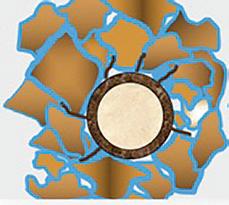


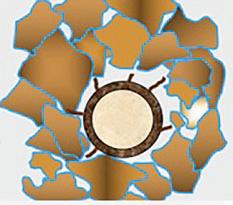

refer to soil surfactant products as “wetting agents.” Should all or some specific soil surfactants be listed as a biostimulant? Can soil surfactants “behave as biostimulants,” or “facilitate a biostimulant effect” when applied to turfgrass rootzones? Surfactants are primarily and traditionally used for water conservation, improving irrigation use efficiency, and ameliorating soil water repellency. The utilization of soil surfactants is considered the number one water conservation strategy among golf course superintendents in the USA. Current research indicates certain diverse rootzone processes can be “engineered” by surfactants to optimize rhizosphere and soil biophysical, microbiological, and chemical properties (Figure 1).
IX. Other naturally derived or synthetic bioactive compounds
This category is a “place-holder” for soil-directed compounds not yet described or fully understood, or for compounds that do not fit the description of the other categories.

https://ernstseed.co/adPaT
Figure 1. An example of a beneficial application program of Excalibur soil surfactant (AquaAid Solutions; Rocky Mount, NC) on a creeping bentgrass putting green subjected to drought stress. The volumetric water content status of the rootzone was improved to optimize the function of the rhizosphere. A: Illustration depicting good or optimum root-to-soil contact in Excalibur-treated plot. B: Illustration depicting poor root-to-soil contact in untreated plot.
C: Healthy and dense turfgrass visible within the plot, indicating good root-to-soil contact and access to water and nutrients.
D: Drought stress visible within the plot, indicating roots with compromised physiological function.
Images in A and B from: Weil R.R. and Brady, N.C. 2017. The nature and properties of soils. 15th ed. Pearson Education, New York City, NY. Images in C and D from: Duddek, P., Carminati, A., Koebernick, N., Ohmann, L., Lovric, G., Delzon, S., Rodriguez‐Dominguez, C., King, A., and Ahmed, M.A. 2022. The impact of drought-induced root and root hair shrinkage on root–soil contact. Plant Physiology 189:1232-1236.
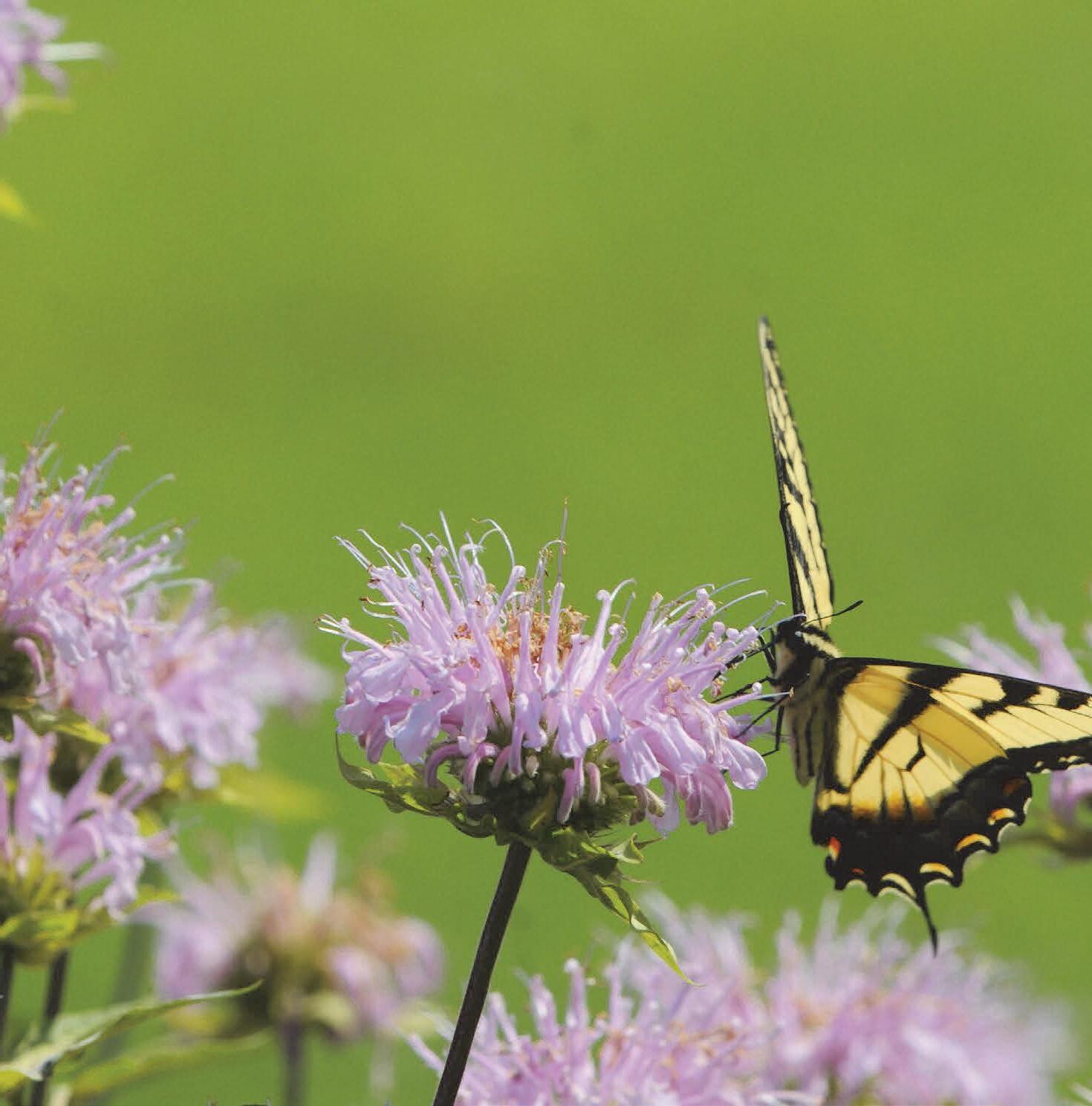
17 Spring 2024 • Pennsylvania Turfgrass 800-873-3321 sales@ernstseed.com
Native grass & wildflower seed
Root Hairs Turgid Root Major Cortex Drying Root Other Soil Surfactant Excalibur Non-Treated Non-Treated with-in plot ‘check strip’
Before considering a biostimulant product or program, a prudent and responsible turfgrass manager should ask “What is in it?” and “What does it do?” (Table 2).
Table 2. Should I use this product on my turf? Eight questions to ask when evaluating a biostimulant, soil amendment, or other turf product to help you make sound, fact-guided agronomic decisions.1
1. Is this product needed in my situation?
2. Are independent test results available?
3. What is the magnitude of response?
4. Does this product provide consistent results?
5. What is the duration of response?
6. Are there better alternatives?
7. Do benefits justify the costs?
8. Should I try this product on a trial area?
1Source: Carrow, R.N. 1993. Eight questions to ask: Evaluating soil and turf conditioners. Golf Course Management 61(10):56, 58, 60, 64, 70.
The purpose of asking questions about biostimulants is to help guide the turfgrass manager towards making the best fact-based agronomic decision. More questions are helpful to further explore a biostimulant’s intended use (e.g., abiotic or biotic stress, plant nutrient efficiency, etc.) and ability to produce or facilitate the desired turfgrass response (Table 3).
A biostimulant or combinations of biostimulants may provide turfgrass management options to maintain or improve turfgrass quality and function during abiotic and/or biotic stress conditions. Moderating and mitigating these stresses are an important strategy to establishing and maintaining healthy, resilient, and sustainable turfgrass. Therefore, should a biostimulant product or program become a valuable component of turfgrass management? The answer to that question may depend on what exactly the turfgrass practitioner wants to accomplish (e.g., better rooting, better tolerance of heat or drought stress, improved recovery from heat or drought stress, traffic tolerance, turf recovery, disease prevention, turf recovery from disease, better color or visual quality, better playability, etc.).
Regardless of the biostimulant product or strategy it is important to note that biostimulants are not a substitute for essential mineral nutrients and a sound agronomic-based turfgrass management program. If the goal is to include or incorporate biostimulants as part of an overall plant and soil health program, then the research in turfgrass ecosystems has demonstrated that they must be applied in advance of those abiotic and biotic stresses to optimize their benefits. There are many exciting innovations on the nearby horizon and evidence-based efforts will lead the way toward a better understanding of how biostimulants will help maintain and improve plant and soil health. Today, much more scientific research is focused on the development, evaluation, use, function, and benefits of biostimulants for sustainable agronomic practices in intensively managed amenity turfgrass ecosystems.
Source: Fidanza, M., C. Bigelow, S. Kostka, E. Ervin, R. Gaussoin, F. Rossi, J. Cisar, F.D. Dinelli, J. Pope, and J. Steffel. 2023. Advances in biostimulants in turfgrass. In Fidanza, M. (Ed.), Achieving Sustainable Turfgrass Management. Burleigh Dodds Science Publishing; Cambridge, UK. p. 469-501.
• What’s in it? What is the product’s composition or active ingredient(s) or component(s)?
• What is its function? How does the product claim to benefit turfgrass?
• Will the product function in all climates, soil types, turfgrass species, and turfgrass cultural practices and management programs?
• Does the product function best to help with abiotic (e.g., drought, heat, salt) or biotic (e.g., insects, pathogens, traffic) stresses?
• Where’s the data? What does the research-based data show that the product does when the product is applied to turfgrass? Were the effects both qualitative and quantitative in replicated field and/or controlled greenhouse research?
• Does the manufacturer have clear research-based data showing that all or most of the product’s active ingredients are essential to its function? Does the data show how individual ingredients, when tested against the formulated product, no longer provide the functional benefit?
1Adapted from: Fidanza, M., Kostka, S., Ervin, E., and Bigelow, C. 2019. The European Union’s view on biostimulants: What may be coming our way. Golf Course Management 87(9):58-62.
18 Pennsylvania Turfgrass • Spring 2024 Cover • continued Achieving Sustainable Turfgrass Management (https://tinyurl.com/2676ukn9) • 20% discount code: TGRASS20
Table 3. What are key questions golf course superintendents, greenkeepers, course care managers, sports field managers, and lawn and landscape professionals should ask when considering a biostimulant product?1
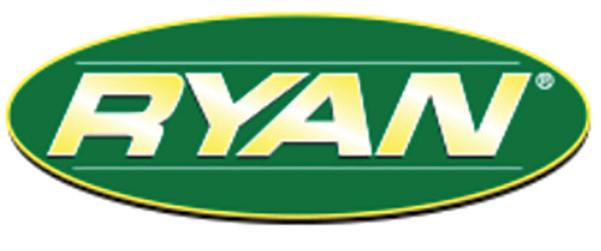
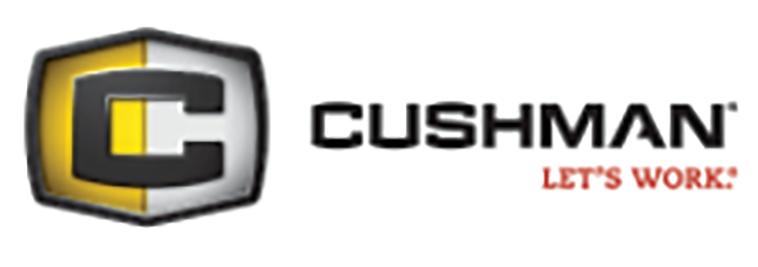

610.933.5801 sales@lawn-golf.com Everything Turf traqnology
7,178

13.29k
4
105
Podcasts produced in 2023 featuring timely topics for those on the go!
41
136,159
2023
Million 14
Visits on The Turf Zone website in 2023 ! Page visits on The Turf Zone website in 2023 ! Social Media Impressions in 2023 !
Total Digital Publication Reads Digital Publication Impressions in 2023 ! State coverage east of the Mississippi !
23,307
Digital and print state turf magazines published in 2023!
